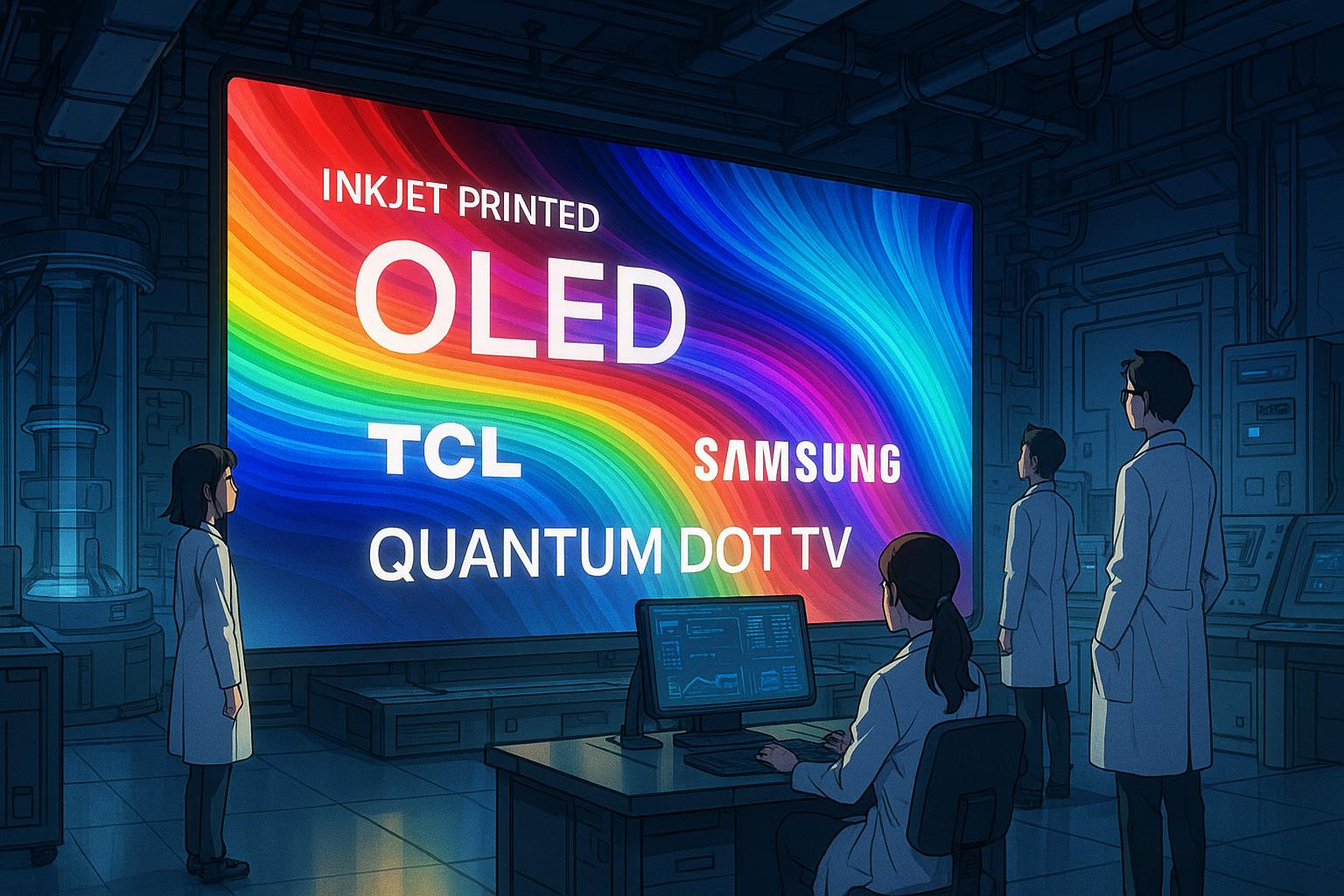The competition in the world of display technology has reached an intriguing juncture, as both TCL and Samsung unveil advances that could redefine our viewing experiences. As two frontrunners in the display industry, their recent developments in inkjet-printed OLEDs and quantum dot technologies present potential successors to current OLED screens, though the reality of these innovations gracing living rooms anytime soon is, unfortunately, distant.
TCL's display-making subsidiary, CSOT, has showcased its inkjet-printed OLED technology, signalling significant strides in the production of these panels, now available in sizes up to 65 inches. This technology promises not only more environmentally friendly production processes but also the capability to be applied across a spectrum of devices, from televisions to smartphones. By utilising precision inkjet printers, TCL has reportedly reduced internal light loss by 50%, leading to a 1.5-fold increase in light output efficiency. Such efficiencies suggest brighter displays with enhanced colour vibrancy, as well as a 50% reduction in blue light emissions, important factors for energy-conscious consumers.
TCL has announced plans to enter small-scale production with 21.6-inch 4K OLED panels by the end of 2024, targeting use in medical monitors, with aspirations for larger consumer-oriented panels in the near future. However, while this progress is commendable, experts caution that it could take several years before inkjet-printed OLEDs become affordable for the average consumer. The cost of new technologies often remains prohibitive until mass production drives prices down, which is a sentiment echoed by TCL itself.
Conversely, Samsung Display's innovative venture into quantum dot electroluminescence (EL-QD) is garnering attention for its promise of enhanced colour gamuts and lower power consumption. Excitingly, recent developments have reportedly tackled EL-QD's longevity issues, which had previously hampered its commercial viability. The new prototypes, now devoid of cadmium—a substance constrained under various international regulations—exhibit improved lifespans. Nevertheless, Samsung's latest EL-QD prototype, measuring just 18.2 inches, struggles with brightness levels that do not yet compete with existing OLED technology, reaching a mere 400 nits compared to the over 1,000 nits of leading OLEDs.
As exciting as these advancements are, neither technology is ready to replace OLEDs in homes just yet. Experts agree that although both TCL and Samsung are paving the way for a future where display technologies could surpass what is available today, significant hurdles remain before mass production becomes a reality.
Furthermore, the broader landscape of competing technologies continues to evolve. Emerging alternatives like Quantum Dot Electroluminescent (QDEL) TVs and Phosphorescent Organic Light-Emitting Diodes (PHOLEDs) offer their own enticing features. The QDEL technology, for instance, promises remarkable energy efficiency and long lifespans, positioning it as a contender in the shift away from OLEDs.
However, Samsung and TCL's efforts to innovate show that the pursuit of better display technology is a multi-faceted race. While both companies have achieved important milestones, the timeline for seeing such advances in the average consumer's home remains uncertain. As they continue to refine their technologies, potential customers are advised not to delay their television purchases and to remain patient for the next big breakthrough that could change the way we view content.
As the display technology landscape unfolds, it is evident that innovation is currently abuzz, setting the stage for an exciting future. Yet, for now, the major players continue to navigate the complexities of production, cost and consumer readiness before truly revolutionising our viewing experiences.
Reference Map
- Paragraph 1: Sources 1, 3, 4
- Paragraph 2: Sources 2, 3
- Paragraph 3: Sources 2, 5
- Paragraph 4: Sources 1, 4
- Paragraph 5: Sources 3, 4
- Paragraph 6: Sources 1, 4
- Paragraph 7: Sources 1, 4, 6
Source: Noah Wire Services
